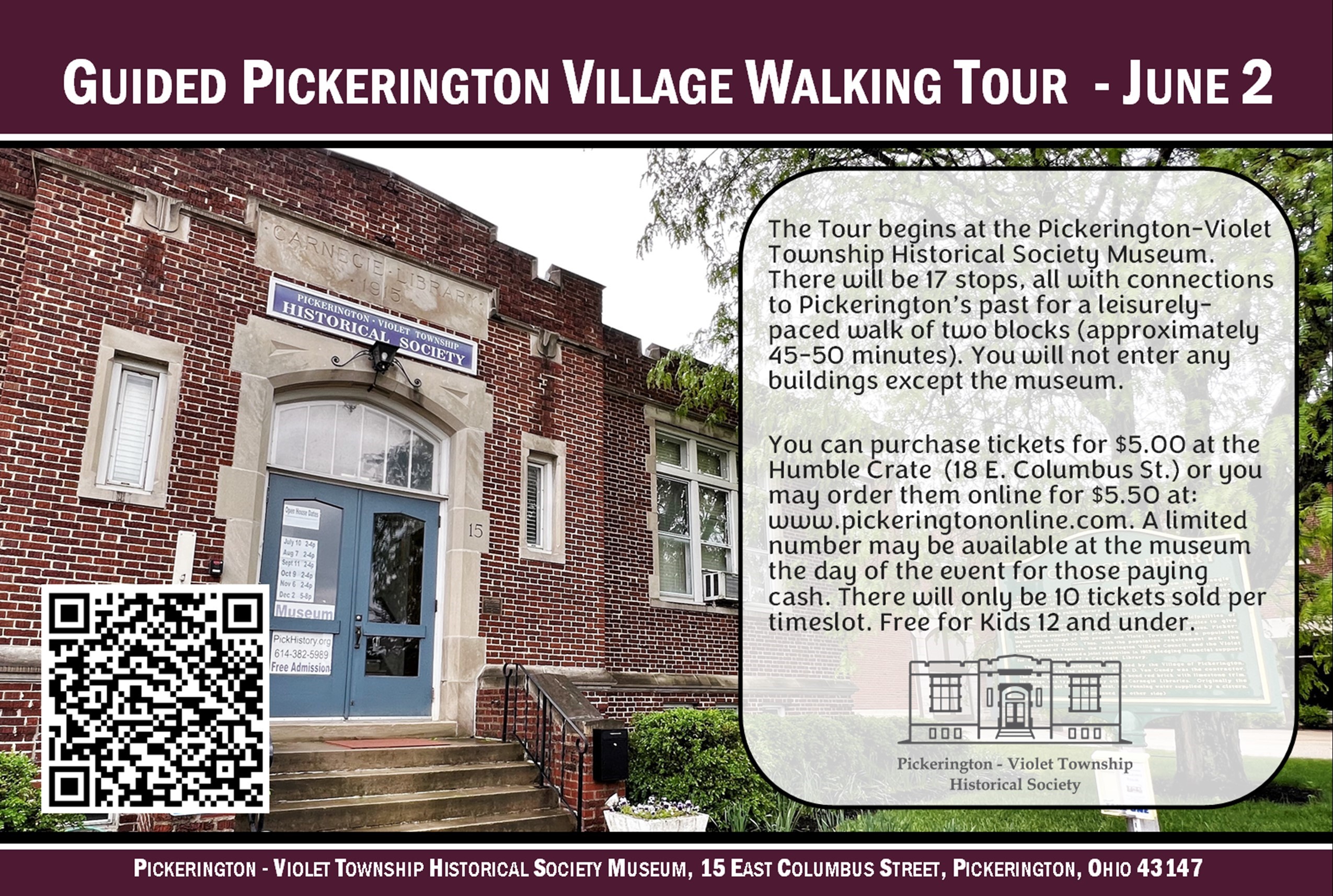Nov. 5, 2021

Sears Arlington Model Photo by the Vagabond Historian 

Was your house built from a kit that was purchased through the mail? From 1908 to 1940, Sears Roebuck & Co. sold more than 90,000 houses through its catalogs. That included over 400 home models.
From 1909 through 1932, Montgomery Ward sold more than 32,000 houses this way as did smaller companies including Harris Brothers Homes in Chicago. Lustron Homes in Columbus, Ohio offered house kits completely comprised of porcelain-coated steel. Hundreds of kit homes are located in our region of the country. You may live in one of them and not even know it.

Since Sears sold the most by far, I will mostly focus on them. Researchers do not agree on how many homes Sears actually sold, with estimates ranging from 50,000 to more than 100,000. During the 1940s Sears headquarters did some house cleaning and destroyed all of the records pertaining to the houses, so there is no way to know the exact number of kits that were sold, but most experts place the number at more than 90,000.
Here is how it worked: Every year from 1908 to 1940, Sears published a catalog of houses for sale. The prospective homeowner would browse through the catalog and select a home.
The catalog stated, “We have everything you need – including the money” so Sears would finance the home for you. During the height of the Sears home era, Sears became the world’s largest mortgage holder.
At a plant located near Newark, New Jersey, Sears measured and precut the lumber for each home. They stenciled numbers onto the boards or hand labeled the lumber using grease pencils which were usually dark blue. The lumber mill would then bundle all of the pieces together and ship it via box car. The delivery included a 75-page book with assembly instructions.

If you look carefully at a picture of the plant in Newark, you can see the railroad spur just beyond the factory. You would have to arrange to transport the house kit from the nearest rail yard to the your property. You were also responsible for preparing the foundation and assembling the house. Sears would estimate the price to hire local carpenters to assemble the house and would include that cost in the financing.
Most Sears stores employed building counsellors to assist you in the process of selecting your home, financing the cost, arranging for delivery and constructing the house. Whenever I do a civic presentation on Sears homes, someone usually askes what would keep a friend of a Sears home buyer from going to the local lumber yard, buying the lumber and building their own house using the 75-page instruction book as a guide. No doubt that happened, but it would usually cost less to order the kit from Sears because, at the time, Sears had become the world’s largest lumber retailer. They bought lumber in huge quantities and owned many of the production facilities. They could sell the materials and deliver them for cheaper than what a local lumber yard could offer and Sears offered the financing to boot.
Early Sears houses used balloon framing, so the kits were easy to assemble. Sometime in the teens, Sears switched to platform framing for the two-story homes. The introduction of drywall in 1917 removed the need for the amateur home builder to hire a plasterer to finish the walls thereby making the erection of a Sears kit house even cheaper and easier. Sears even provided its own brand of drywall with house kits after that.

Image Source: 1922 Sears Homes Catalog
Using other Sears catalogs, the building counsellors also assisted folks with selecting cabinets, doors and windows, as well as gas, electrical, and plumbing fixtures. Most of the finished woodwork items came from the 17-acre Sears Sash and Door Plant at Norwood, Ohio near Cincinnati. Sears also shipped those items via rail car.

Image Source: Harris Brothers 1913 Catalog
Many of the homes that Sears, Montgomery Ward and Harris Brothers sold were not original designs, but were inspired by or copied from existing home designs. As a result, all three companies sold similar looking homes.
The picture to the right shows an example of a Harris Brothers home called “The Harris Model 6.” This home appeared in the 1913 – 1915 Harris Brothers Homes catalog.
Sears and Montgomery Ward both sold similar homes with variation in the roof turrets and other more subtle details. Over 1,000 Harris J-6 houses were built by 1915 even though most people considered the design to be ugly!

except for the roof on the turret.
Image Source: 1917 Sears Homes Catalog
By now, you may be wondering if you or someone you know may live in a Sears or Montgomery Ward kit house. To find out, begin by determining when your house was built. If it was constructed before 1909 or after 1932, it is not a Montgomery Ward house. If it was constructed before 1909 or after 1942, it is not a Sears house.
Before you sharp-eyed proofreaders point out that I previously stated that Sears only published home catalogs through 1940, I will let you know that they continued to ship kits from their inventory through 1942.
While you trace back the ownership of your home to determine when it was constructed, see if you can find out who financed the first mortgage. If it was Sears, you are probably the owner of a Sears home. If you are not sure when your house was built, check with your county auditor. They may have a construction date on file. (Fairfield County Auditor, Franklin County Auditor, Licking County Auditor)
An obvious thing to check is if your house looks like any in the Sears catalogs. Sears has put a number of the catalog homes online at this link.
Use your favorite search engine to research Sears or Montgomery Ward houses from the year that your house was built and the two years prior to that. By the time the house kit was ordered, delivered, and constructed, the year of record for when the house was built would most likely differ from the year that it was ordered.

There are Sears home models that do not appear in any of the catalogs that Sears has posted online. For those you need to use the “photo search” function on the Google Lens app. However, finding a home similar to yours in a Sears catalog does not guarantee that yours is a Sears house. Remember, Sears sold houses that copied popular styles and so did Montgomery Ward and the other kit house companies.
If you find a home similar to yours and the website provides the name of the home model, then look for it in a Sears home catalog. If you find a house like yours in a Sears Home catalog, check out the floor plan. If it is a two-story house, check out the floor plans for both floors. Be sure to remember that the floor plan could be flipped or slightly altered by remodeling.
Also, be aware that there were options available sometimes that altered the floorplan. We live in a Sears Starlight house. The Starlight was sold with or without an indoor bathroom. Ours had the indoor bathroom, but the floorplan was flipped. Some of the homes had optional items like bay windows or porches. To further complicate things, the home may have been remodeled over the years. Some old houses may have been remodeled more than once.
From the outside, our home does not resemble the original Sears Starlight. A previous homeowner had enclosed the back porch to create a pantry. When we bought the house, the roof structure was bad, so we completely removed the roof including the rafters. We replaced the rafters with trusses thereby changing the entire design. While we were replacing the roof, we also enclosed the front porch to create another bedroom and an entryway.

Photo by Vagabond Historian
A few years ago, we gutted the part of our house that had originally been an enclosed back porch. When the prior homeowners had remodeled that porch to create a pantry, they walled over the original windows rather than remove them. When we stripped off the drywall that they had installed, we discovered the old windows still intact except for the glass.
The numbers “2 – 8” were stenciled on the drip cap above one window. In addition, it was marked “Drip Cap #3” using a dark blue grease pencil. This drip cap is a great example of marked lumber that you might be able to find in your Sears house. They did not mark every stick of board and most of the lumber in your house is not visible, so you have to be creative if you search for marked lumber. Use a strong flashlight and examine the structure behind your basement steps. Check out floor joists in the basement if they are visible. Go into the attic and examine any exposed lumber. Any time you do remodeling, keep a sharp eye out for grease pencil markings or stenciled numbers.
A couple of our floor joists have grease pencil markings on them, but they are not noticeable without a flashlight. Also keep an eye out for the shipping label. Finding the shipping label is a little like striking gold because it is so unlikely to be in a place that is visible (if it even still exists), but some owners of Sears homes have found them, so anything is possible. If your house was constructed within the corporate limits of a city, a building permit may have been required. A few lucky homeowners have been able to find the original building permits which listed Sears as the architect or as the builder.
When our house was built, it had gas lights. Over the years, we have removed all of the half-inch iron pipe that originally weaved through the house to provide gas for those lights. Unfortunately, none of the lighting or plumbing fixtures were still in the house. However, your home may contain some original Sears hardware. If the house still contains the original cast iron bathtub, it may be marked with a circle containing the letters “SR” for Sears – Roebuck. It is unlikely that any of the original faucets are still in the house, but if they did some may be marked with the initials “SR”.
Another bit of evidence can be found by examining the hardware on the kitchen cabinets. Sears also sold plumbing fixtures and cabinet hardware through its catalogs and at its stores, so a Sears bathtub in your home does not make it a Sears home. Sears manufactured their own drywall during part of the time that they sold house kits. If you do any remodeling that requires the removal of some of the original drywall, look at the back side of the drywall to see if it might have been Sears drywall.


Look for unusual or unique architectural or structural features. Note the unusual arrangement of the porch posts on the Sears Westley in the above picture. They are in groups of three connected by 3″ x 3″ timbers. That porch post arrangement was used for half a dozen or so Sears Home models.


Photo by Vagabond Historian

Mockup and photo by Vagabond Historian
Sears foursquare models like the Garfield often had pairs of windows on the second floor above the porch and several models had triple windows on the porch. Pay special attention to the locations of the chimneys in your house if they are original to the home. Don’t forget that they may be located on the opposite side of the house if the floorplan was flipped. One thing that is usually not changed when a home is remodeled is the location of the chimney.

Since the kit houses were often assembled by inexperienced homeowners, Sears often made it easy to assemble complex joints like where a baseboard along a stairway joined a baseboard along the floor. Instead of having the homeowner assemble a complex miter, many Sears homes used a simple rectangular wood block as shown above to make that transition. It was a simple trick that is common in Sears homes, but that trick was also used by other builders and there are Sears houses that do not use the blocks.
Disclaimer: I have identified the probable models of all of the houses pictured based on outside appearances. Since I have not completely researched those houses, some may be kits from other companies or may simply be homes with designs similar to kits. Additional research would be needed for verification. – Vagabond Historian
This the third in a series of stories about historical places to visit in Ohio. If you enjoyed the article please comment below.
Please also check out previous installments of this series:
– Geohistory: Flint Ridge.
– Geohistory: USS Shenandoah.





















